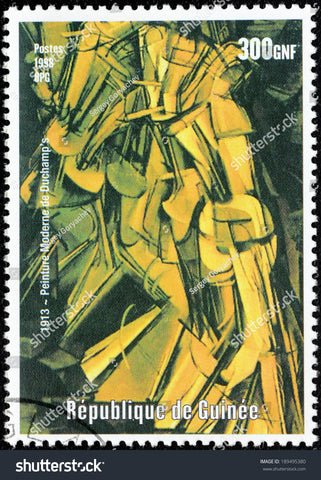Ekphrastic Poetry: The Magical Connection between Poetry and Visual Arts
What is Ekphrastic Poetry?
Ekphrastic poetry is most frequently used to describe a poem that is written about a piece of visual art. According to the Oxford English Dictionary, “ekphrastic” means “Employing, characterised by, or relating to a literary device in which a painting, sculpture, or other work of visual art is described in detail.” Thus, one may define ekphrastic poetry as a literary piece that is rich in poetic imagery concerning visual images produced by another artist.
Ekphrasis means “description” in Greek. Although the word "ekphrastic poetry" now refers to poems that are inspired by works of art, it was originally used in ancient Greece to describe the ability to describe something in vivid detail. Homer's epic poem contains one of the oldest examples of ekphrasis. The speaker of The Iliad meticulously depicts Achilles' shield in approximately 150 lines.
One more recent and equally famous instance is the poem "Ode on a Grecian Urn," in which John Keats makes assumptions about the identities of the lovers who seem to dance and play music while simultaneously being fixed in time and moving constantly:
“What men or gods are these? What maidens loth?
What mad pursuit? What struggle to escape?
What pipes and timbrels? What wild ecstasy?”
All of this description is inspired by the Grecian Urn, i.e., a piece of artistic sculpture.

MORE RECENT EKPHRASTIC POETRY – 20th Century
While ekphrastic poetry may be influenced by sculpture or other man-made artefacts, the majority of modern correspondences take place as exchanges between the "sister arts" of poetry and painting. After the turn of the 20th century, poets and painters, many of whom were close friends (Williams and Charles Demuth, for instance), rebelled against the accepted ideology of realism and naturalism to produce the radical voices, forms, and styles of developing modernism in Euro-American literature of the twentieth century. Even now, the connection between poetry and art is very significant in our literature.
Ekphrasis in literature has a well-established rhetorical tradition. Some of the notable twentieth-century examples include "Mused des Beaux-Arts," W. H. Au- den's poem (1959) inspired by Brueghel's Fall of Icarus, and William Carlos Williams' Pictures from Brueghel (1962. X. J. Kennedy's "Nude Descending a Staircase" (1971) based on Marcel Duchamp's modernist painting of the same name is a more recent example in the twentieth century.

Characteristics of Ekphrastic Poetry
Ekphrastic poetry is a little hazy as a form and hence doesn’t have many definite elements associated with it. It is also continuously evolving with the evolution of existing and the entry of new visual art mediums. Perhaps this is what makes Ekphrastic poetry so beautiful and relevant today. There are still a few characteristics that one finds common across Ekphrastic poems.
- Lucid Detail: Ekphrastic poetry must include clear and detailed imagery, which grounds the poem in its form. A description taken from the source must be scaled in ekphrastic poetry. Not only does it form the aesthetic of an ekphrastic poem, it also associates it substantially with its source of inspiration.
- Response: Ekphrastic poetry must make an effort to convey the mental and emotional response sparked by the motivating work through such in-depth description. But it doesn’t need to replicate the effect, it can also be in dialogue with it. While reading an ekphrastic poem, the reader is only presented with the poet's interpretation rather than the original work of art.
- Artistic Source: Last but not least, ekphrastic poetry must be based on an artistic source. Although one can argue the presence of artistic beauty in the simplest ordinary things of life, poetry cannot appear out of thin air; if it does, it will just be a poem.
Why Ekphrastic Poetry?
Ekphrastic poetry, for one thing, enhances the poems' accessibility via the painting and vice versa. It can therefore be a good way to start reading poetry/paintings.
Secondly, living in a post-cinematic world, visual mediums are more flourished than ever and Ekphrastic poetry keeps poetry relevant.
Thirdly, it’s an inter-medium adaptation – or an inter-medium translation, which is the whole spirit of art practice. Any art form seeks to translate psychic thoughts into literal or visual language.
Ekphrastic poetry is as temporal as eternal.
Written by Prachi Rautela







Leave a comment